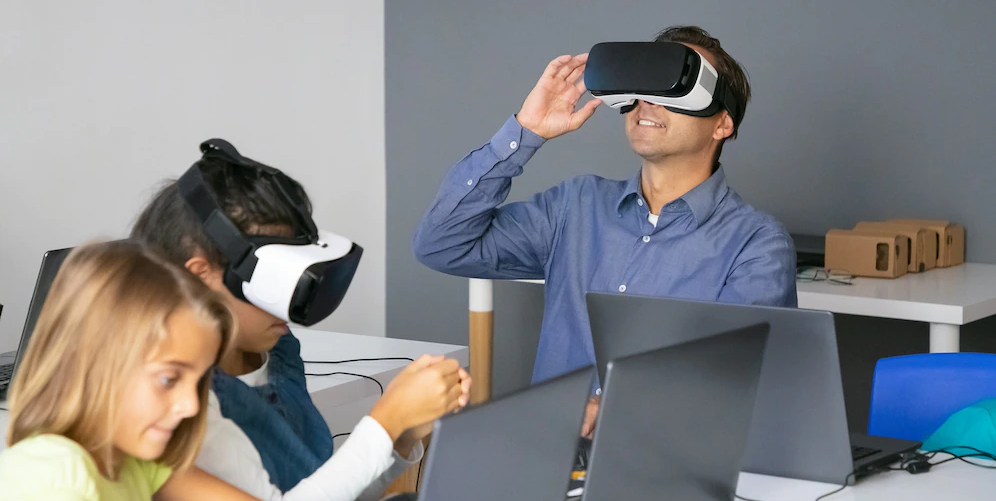As the realisation of technology continues to expand in wider business contexts, educators are striving to increase the level of interaction between students and learning to foster an effective learning environment for both students and teachers, in line with the capabilities of technology. The emerging potential of Augmented Reality in education is coming to be realised. This is one of the most promising technologies for increasing engagement and the level of interaction within the classroom. Augmented reality can be defined as an experience where designers enhance parts of users’ physical world with computer-generated input.
Learning Environment
With the application of AR, the classroom environment can become exponentially more interactive, as AR can empower teachers to exhibit virtual examples of concepts and add gamification elements to providing textbook material support. This capability will allow students to visualise a learning concept, explore the model in 3D and also have an alternative to a textbook image, which often they may be required to leave the textbook at school or with the training provider. Therefore, having limited access to learning resources.
Sensory Development
Augmented reality can also facilitate learning through multisensory content. This entails education that stimulates the human senses, this allows educators to create exercises that require physical activities. This capability permits students to be more interactive in their learning, by moving around and generating discussion. Instead of being taught traditionally at a desk, with the student being stationary.
Engaging Students
The deployment of AR in education, can effectively engage students and make learning more interesting. This will have a favourable effect on the level of interaction shown by students. This is because students have access to virtual worlds and can explore their interests in a visual way that was previously unattainable, through traditional teaching. Students also have the opportunity to interact with virtual models that are more equipped to explain complex designs than textbooks or videos. This capability will help to keep students engaged and inspire collaboration, as students can use AR technologies in small teams in a classroom context.
What does this mean for the future of the classroom?
AR can become the future of learning. The rationale is that lessons can be made more engaging, easier to understand and overly more interactive. Furthermore, the opportunity for students to learn via a more hands-on approach should be strived for by educators. Augmented reality is a key tool for this practical learning.
Within the AR4EFL project we are aiming to create a realistic learning environment for learners of a second language as a means to motivate them to learn. We also seek to design, test and publish an innovative educational package based on AR technology for primary school teachers that will guide and support their English (or any other) as second language teaching. As well as providing quality training to primary school teachers on how to utilise the innovative educational package in in traditional or virtual/online classroom.
For more information please visit our website: https://ar4efl.eu/
And follow us on Facebook: https://www.facebook.com/AR4EFL

